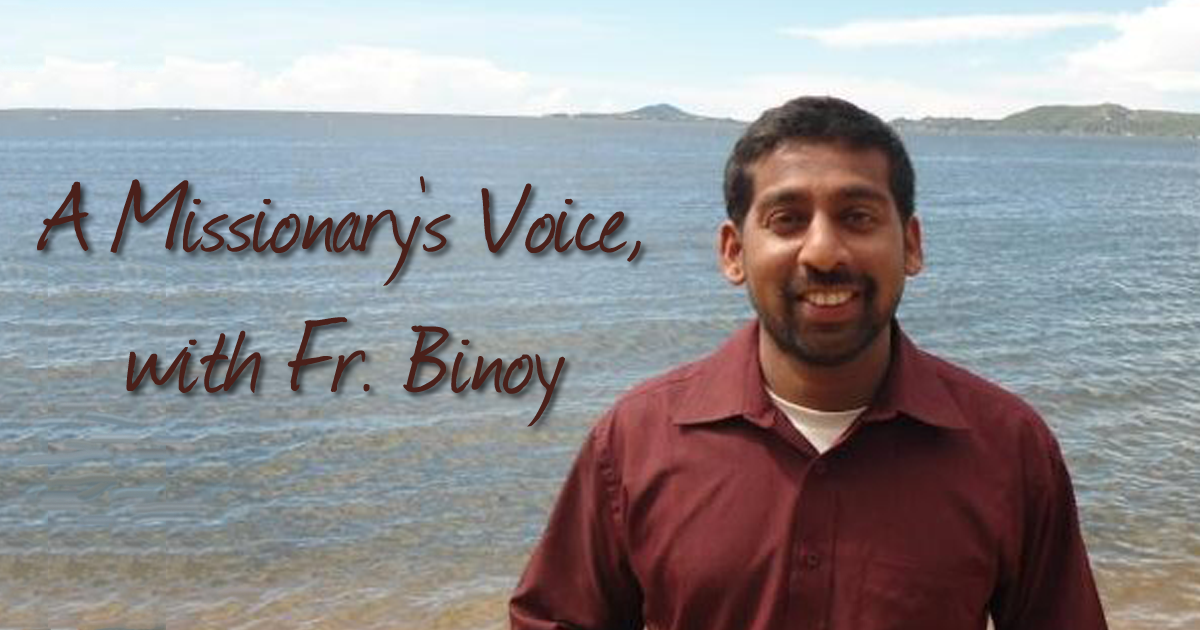The famous 2004 film, The Passion of The Christ, directed by Mel Gibson, depicted very vividly the passion which Jesus underwent, especially during the last twelve hours of his life here on earth. The film opens up with a touching visualization of Jesus’ prayer at Gethsemane. The synoptic Gospels while speaking about this event also gives us a very clear picture of what Jesus was undergoing within himself at this decisive moment of in our salvific history.
Jesus began to be distressed and agitated and he said to them, “I am deeply grieved, even to death” … And going a little farther, he threw himself on the ground and prayed that if it were possible, the hour might pass from him (Mk14:33-35).
In his anguish he prayed more earnestly, and his sweat became like great drops of blood falling down on the ground (Lk 22:44).

Mel Gibson in his film, shows this intense moment prayer of Jesus as his final struggle with Satan. As Jesus continues to pray, Satan appears in a hooded androgynous, albino form, and tempts him, stating – “it is not right for one man to die for their (humanity’s) sins.” Ignoring it and praying on, Jesus’ sweat turns into blood and drips to the ground. Then we see a snake emerges from Satan. Jesus rebukes the Satan and crushes the serpent’s head by stomping on it very powerfully. It was a symbolical expression of Jesus’ final victory over Satan by his total surrender to God’s will.
Theological tradition interprets the prayer of Jesus at Gethsemane, as a conflict between the human and divine nature Jesus. As human, Jesus is distressed and agitated in the midst of rejection and loneliness. He feels the fear of death. His human nature draws him back, makes him anxious and doubt. It was the result of his taking up of our sinful human conditions to raise it up. The human nature moved him to pray “Remove this cup from me.” But as Son of God he surrendered his will to his father by saying: Not My Will but Yours be done. This was the decisive moment of our human salvation, victory of God’s grace over human nature.
In the Letter to Hebrews we have a different account of Jesus prayer at Gethsemane: In the days of his flesh, Jesus offered up prayer and supplications, with loud cries and tears, to the one who was able to save him from death, and he was heard because of his reverent submission (Heb5:7). It helps us to see the passion of Jesus, especially that which he endured from Gethsemane until his last breath on the cross as a long prayer which Jesus offered to His Father.
The victory of Jesus over sin and death is the result of his victory during his prayer at Gethsemane. This is also our victory, because Jesus had taken upon himself our human nature. Jesus’ victory makes it possible for us that we can say no to our sinful human nature and say yes to God’s will. This is the joy of Easter.
About the Author:
 Fr. Binoy Puthusery, C.M. is a Vincentian priest belonging to the Southern Indian Province. He was ordained as priest on December 27, 2008 and soon after served as an assistant parish priest in Tanzania. In 2011, after two years of ministry, he was appointed as Spiritual Director to the Vincentian Sisters of Mercy, Mbinga Tanzania. He currently lives in Barakaldo (Spain), and is a teacher in the Masters in Vincentian Studies.
Fr. Binoy Puthusery, C.M. is a Vincentian priest belonging to the Southern Indian Province. He was ordained as priest on December 27, 2008 and soon after served as an assistant parish priest in Tanzania. In 2011, after two years of ministry, he was appointed as Spiritual Director to the Vincentian Sisters of Mercy, Mbinga Tanzania. He currently lives in Barakaldo (Spain), and is a teacher in the Masters in Vincentian Studies.







Powerful reflection!
Thanks Father Binoy for sharing scripture with us during this holy week. God bless you.